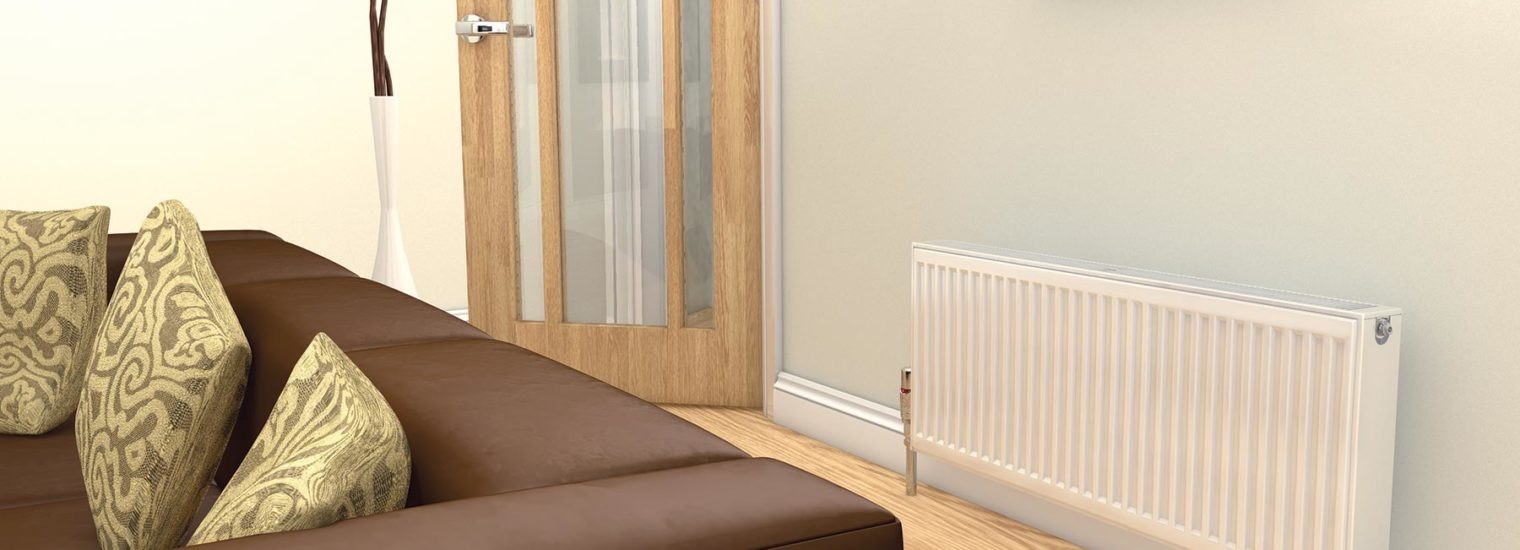Step 1 – Installing a Concord Vertical & Slimline radiator:
Install / plumb the Concord Vertical & Slimline radiator with the flow and return either side, this is due to a ‘baffle’ incorporated into the radiator within the bottom horizontal header bar. The air vent should be fitted diagonally opposite the lock shield valve with which the radiator will be filled. If using a TRV (Thermostatic Radiator Valve) the TRV must be fitted on the flow unless it is bi-directional.
Step 2 – Filling the radiator with water:
Once the radiator is correctly installed and with both valves shut off (no water should be in the radiator), ensure the heating is turned off, the water is cool, and the system pressure is maintained. Fully open the air vent which will allow the air to be evacuated when the radiator is being filled with water.
Using the lock shield valve, gradually fill the radiator with water. You will start to hear the water passing through the valve (lock shield valve), by slowly allowing the continuous flow of water to fill the radiator, this will ensure that no air becomes trapped within the tubes and the entire radiator will become completely full of water. The valve should remain open for the duration of the radiator being filled, and this may take a few minutes to complete. Once water starts to bubble and spurt out of the air vent, wait until all bubbles have stopped and then close the air vent. When the air vent is closed, this is the time to open both valves (lock shield and the TRV).
Once the above steps have been completed, turn on the heating and check the entire radiator is evenly heated.
Step 3 – If the radiator doesn’t heat evenly:
If the radiator starts to make a dripping or trickling noise or is not evenly heated across all the tubes, this suggests that the radiator is not entirely full of water and has air gaps, therefore, you will need to isolate both sides of the radiator, drain and then repeat step 2.
Please note:
This is only a guide, if in doubt please seek professional advice from a qualified heating engineer.



